Deeply rooted in ancient Shinto rituals, Kagura embodies the rich folklore of Japan. Through mesmerizing performances, Kagura dancers channel the spirits of kami, or deities, weaving captivating narratives that connect the audience to a world of myth and spirituality. From vibrant costumes to intricate movements synchronized with traditional music, every element of Kagura celebrates the cultural heritage of the Land of the Rising Sun. Explore the enchanting world of Kagura to uncover the profound significance it holds within Japanese society.
Good To Know
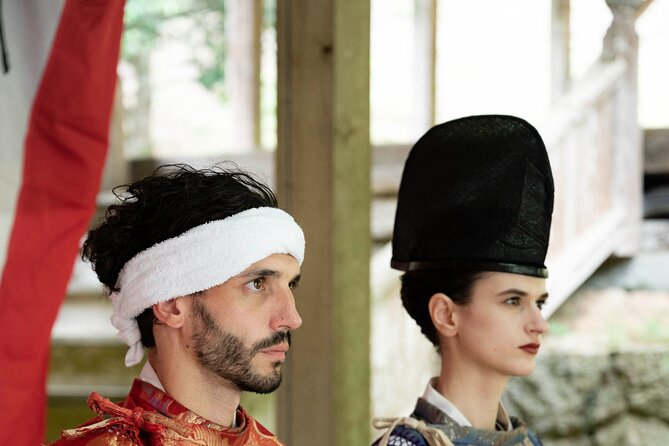
- Kagura rituals and performances are deeply rooted in Shinto traditions, preserving ancient Japanese cultural heritage and beliefs.
- The intricate movements and costumes of Kagura performers are believed to channel and embody divine Shinto spirits and deities.
- Kagura ceremonies and dances often depict legendary Shinto myths and tales, serving as a medium to communicate with the divine.
- The purification rites and climactic dances in Kagura rituals are symbolic of cleansing the spirit and invoking blessings from the kami (Shinto deities).
- The mesmerizing Kagura music, featuring traditional Japanese instruments, creates a transcendent atmosphere that bridges the human and divine realms.
Origins of Kagura
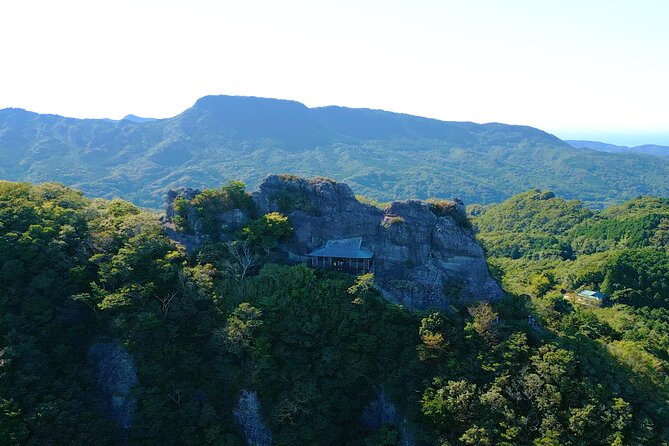
Although the origins of Kagura remain shrouded in mystery, scholars believe this ancient Japanese ritual dance has its roots in Shinto traditions dating back centuries.
Kagura is thought to have emerged as a means of honoring and communicating with the kami, or divine spirits, through music, dance, and drama.
Over time, Kagura evolved into a diverse range of styles and performances, each with its own unique aesthetic and spiritual significance.
Today, Kagura continues to be practiced across Japan, preserving a vital link to the country’s rich cultural heritage and mystical past.
Find more activities and experiences we've covered in Oita.
The Kagura Performers
The Kagura performers, a select few individuals, are entrusted with the sacred duty of channeling the divine spirits through their captivating dances and intricate rituals.
These highly trained artists undergo years of rigorous training, mastering the intricate footwork, graceful movements, and symbolic gestures that bring the legends and myths of Shinto to life.
With unwavering focus and deep reverence, they don their elaborate costumes and step into the realm of the divine, becoming vessels for the kami, the Shinto deities.
Through their performances, the Kagura performers transport audiences to a world of wonder and spiritual connection.
Kagura Rituals and Ceremonies
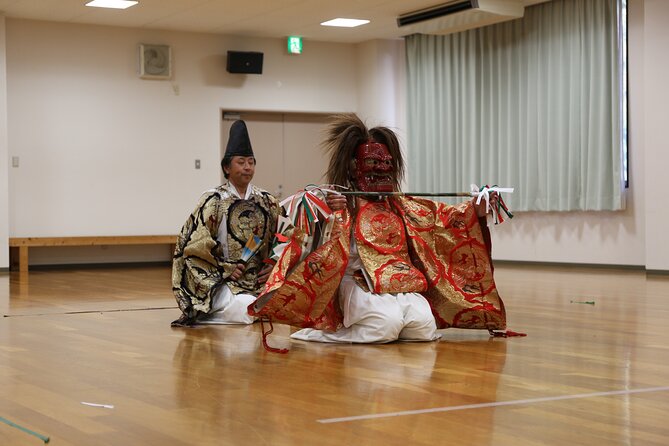
Steeped in centuries-old traditions, the Kagura rituals and ceremonies captivate audiences with their intricate choreography and profound spiritual significance.
Performed by specially trained dancers, these rituals honor the Shinto deities and tell ancient tales through graceful movements and elaborate costumes.
From the purification rites that open each performance to the climactic dances that invoke divine blessings, every element of a Kagura ceremony is imbued with deep meaning.
Audiences are mesmerized as the performers commune with the spirit world, creating a transcendent experience that bridges the human and divine realms.
Symbolic Meanings in Kagura

While the dazzling costumes and captivating choreography of Kagura rituals captivate audiences, the true power of these ceremonies lies in their symbolic meanings.
Kagura’s symbols represent:
- Connection to the divine: Performers embody Shinto deities, bridging the mortal and spiritual realms.
- Harmony with nature: Movements and props emulate natural elements like wind, water, and animals.
- Purification and renewal: Rituals cleanse the spirit and usher in new beginnings.
- Community unity: Participation fosters social cohesion and transmits cultural heritage.
These layered meanings elevate Kagura beyond mere entertainment, making it a profound expression of Japan’s spiritual and artistic traditions.
Kagura Music and Instrumentation
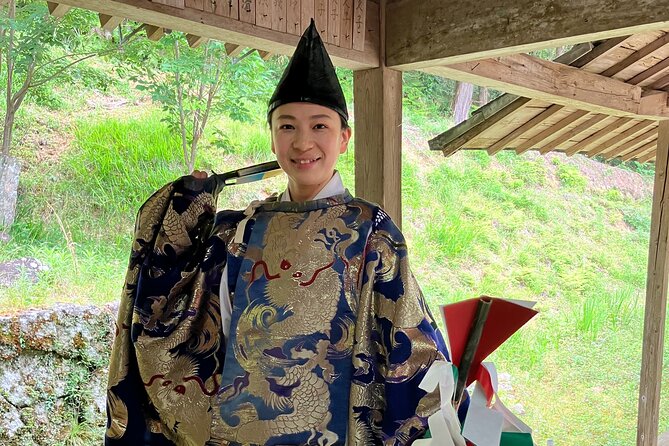
Integral to the captivating performance of Kagura are the distinct musical elements that accompany the rituals.
The Kagura ensemble features a variety of traditional Japanese instruments, including the taiko drum, shinobue flute, and various handheld percussion. The rhythmic beats of the taiko set the pace, while the haunting melodies of the shinobue evoke the spiritual essence of the ceremonies.
Accompanying these are the resonant tones of small hand bells, wooden clappers, and other percussive elements, all combining to create a mesmerizing, otherworldly soundscape that transports the audience into the realm of the divine.
Kagura Costumes and Attire
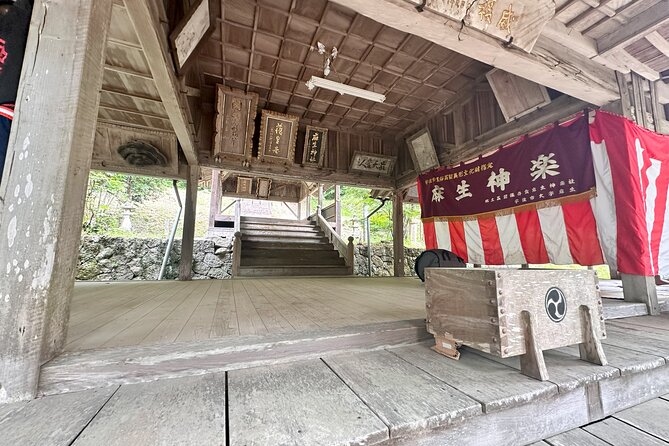
The captivating performance of Kagura is further accentuated by the elaborate costumes and attire worn by the dancers and musicians.
Key features include:
Colorful Yukata: Performers don vibrant yukata, a type of casual summer kimono, adorned with intricate patterns and designs.
Noh-Inspired Masks: Ornate masks, reminiscent of those used in Noh theater, conceal the performers’ faces, adding an air of mystery.
Decorative Headpieces: Elaborate headdresses, such as the iconic Nozoki-kanmuri, crown the dancers, enhancing the visual spectacle.
Tabi Footwear: Traditional tabi socks with split toes complete the ensemble, allowing for graceful movements during the performance.
Kagura Storytelling Traditions
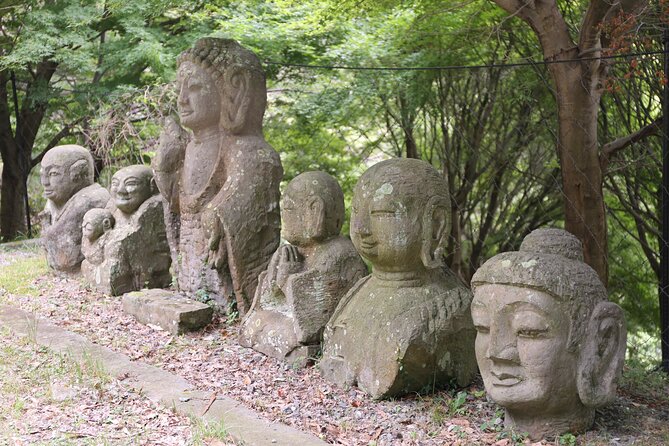
Kagura storytelling traditions are deeply rooted in Japan’s Shinto beliefs, with each performance recounting mythological tales and legends.
Kagura performers use a combination of dance, music, and drama to bring these stories to life, transporting audiences to the divine realm. From the creation of the world to the adventures of powerful gods and goddesses, Kagura offers a glimpse into Japan’s rich cultural heritage.
The intricate movements, vibrant costumes, and mesmerizing rhythms create an immersive experience, captivating both seasoned enthusiasts and newcomers alike.
Through Kagura, the wisdom and spirituality of ancient Japan are preserved and shared with the world.
The Significance of Kagura in Japanese Culture
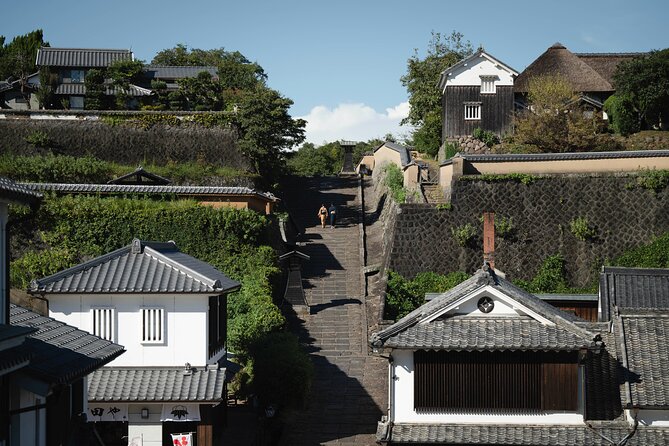
Deeply ingrained within Japan’s cultural tapestry, Kagura holds a revered place, serving as a conduit to the realm of the divine.
This ancient ritual dance illuminates the profound significance of Shinto beliefs, embodying:
- Reverence for nature and the spirit world
- Veneration of ancestral deities and local tutelary gods
- Celebration of seasonal cycles and transitions
- Artistic expression as a means of spiritual connection
Kagura’s enduring legacy underscores its integral role in preserving Japan’s cultural identity, linking the past to the present through the timeless language of movement, music, and myth.
Frequently Asked Questions
Is the Kagura Experience Suitable for Travelers With Disabilities?
The Kagura Experience is not suitable for travelers with disabilities. The tour requires moderate physical fitness and is not wheelchair accessible, making it inaccessible for those with mobility limitations or serious medical conditions.
What Is the Cancellation Policy for the Kagura Tour?
The Kagura tour offers free cancellation up to 6 days in advance, allowing travelers flexibility. They also offer a "Reserve Now and Pay Later" option for booking.
How Do I Get to the Meeting Point From Oita Airport?
Travelers can get from Oita Airport to the meeting point at Usa Station by taking private transportation provided as part of the tour package. The transportation expenses are included in the tour price.
Can I Customize the Kagura Tour Itinerary for My Group?
Yes, you can customize the Kagura tour itinerary for your group. The tour provider offers flexibility to tailor the activities and schedule to your group’s preferences, as long as it stays within the overall tour duration and inclusions.
What Is the Maximum Group Size for the Kagura Private Tour?
The maximum group size for the Kagura private tour is not specified, but it’s noted that "only your group will participate." The tour is private, so the group size can be customized to your needs.
The Sum Up
Kagura is a captivating manifestation of Japan’s rich cultural heritage. Through its intricate dances, rituals, and storytelling, Kagura connects the audience to a realm of myth and spirituality, preserving the essence of ancient Shinto traditions. The mesmerizing blend of movement, music, and symbolism in Kagura transcends time, fostering a deep appreciation for Japan’s enduring folkloristic legacy.
More Tour Reviews in Oita
Looking for something different? Other Oita activities we've written about
- Sanrio Harmonyland Ticket in Fujiwara
- A Gastronomic Tour Exploring the Cycle of Nature and Food
- Folklore of KAGURA
- 3 Best Tours In Oita
- 4 Best Private Driver Services In Oita
- 2 Best Guided Tours In Oita
- 3 Best City Tours In Oita
- Private Yufugawa Gorge Trekking
- Guided E-Bike Tours in Bungoono City
- Mt. Yufu Grassland Private Hiking and Lunch
- Yufuin Onsen Private Guided Walking Tour
- Yufugawa Gorge Packraft Tour
